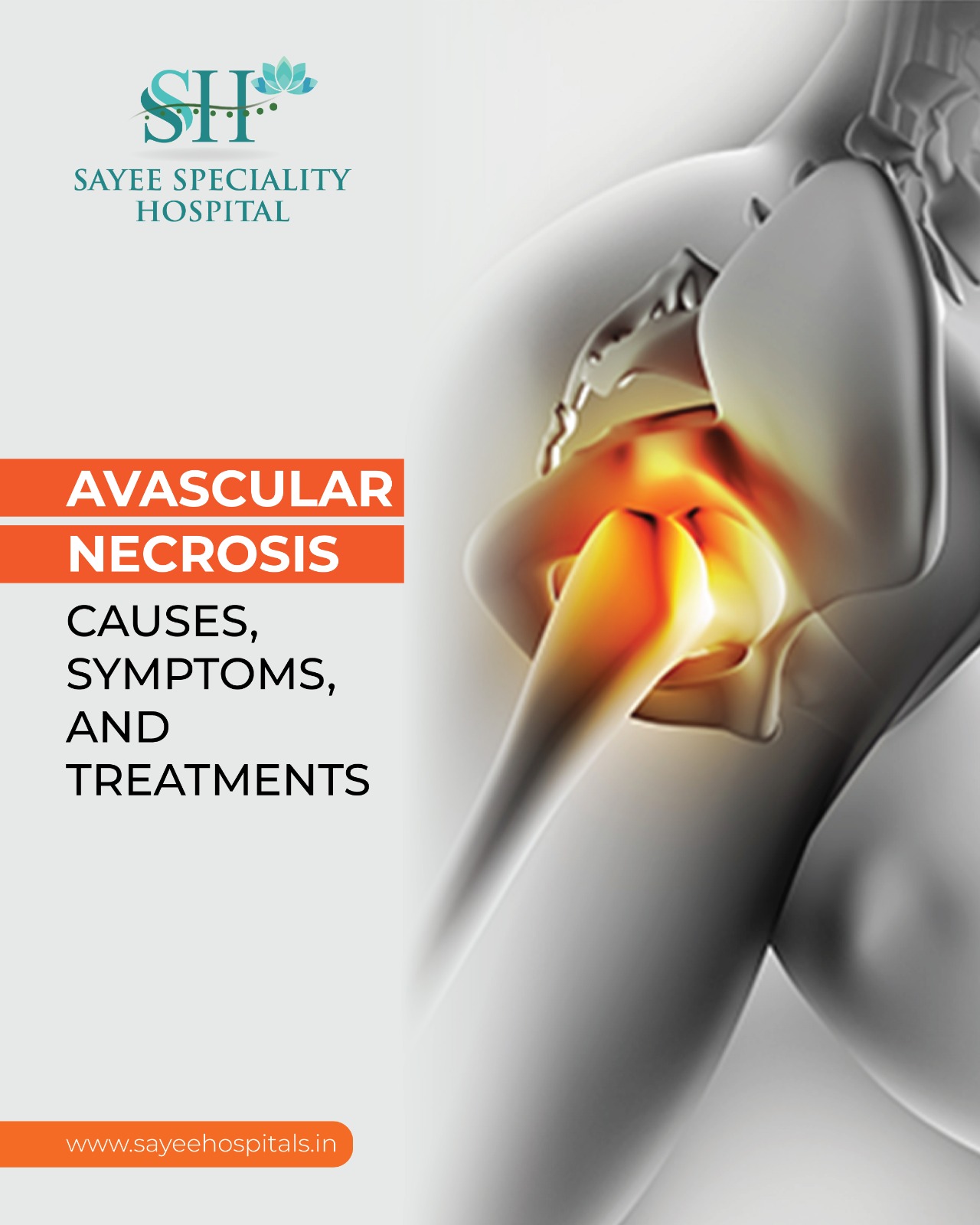Avascular necrosis (AVN), or osteonecrosis, is a painful condition that occurs when the blood supply to bone tissue is reduced or completely cut off, leading to tissue death. While it primarily affects the hip joint, AVN can also impact the knees, shoulders, and ankles. If untreated, this condition can lead to bone collapse.
AVN typically affects individuals between the ages of 20 and 50 and is caused by a range of factors. Injuries like fractures or dislocations, long-term use of steroid medications, and excessive alcohol consumption are common contributors. Certain medical treatments, such as radiation therapy or organ transplants, as well as chronic conditions like diabetes, lupus, and sickle cell anemia, can also increase the risk. Inflammation, blood clots, effect of covid-19 or damage to arteries that supply blood to the bone are additional factors that may lead to AVN.
Early stages of AVN often present no noticeable symptoms, which can delay diagnosis. Over time, joint pain, particularly under pressure, may develop. Symptoms can progress to stiffness, limping, reduced range of motion, and difficulty performing daily activities like walking or climbing stairs. If the joint collapses, excruciating pain may occur, making movement nearly impossible.
Diagnosis begins with a physical examination to assess tenderness and joint mobility. Imaging tests like X-rays, MRI, or CT scans help detect the condition, while bone scans can pinpoint areas of reduced blood supply.
Treatment for AVN depends on factors such as the stage of the disease, the affected area, and the patient’s age. Early-stage AVN can often be managed with non-surgical options like medications, crutches to reduce weight on the affected joint, and exercises to maintain mobility. Medications include NSAIDs for pain relief, blood thinners for clot-related AVN, and cholesterol-lowering drugs to prevent blockages.
Surgical options may be necessary for advanced cases. These include core decompression, osteotomy, bone grafts, total joint replacement, and vascularized bone grafts. Surgeons may also use electrical stimulation during procedures to promote bone regeneration.
Preventive measures can reduce the risk of AVN. Limiting alcohol intake, avoiding smoking, using steroids responsibly, and managing cholesterol levels are effective strategies. Early detection and proactive treatment are key to minimizing complications and preserving joint function.
